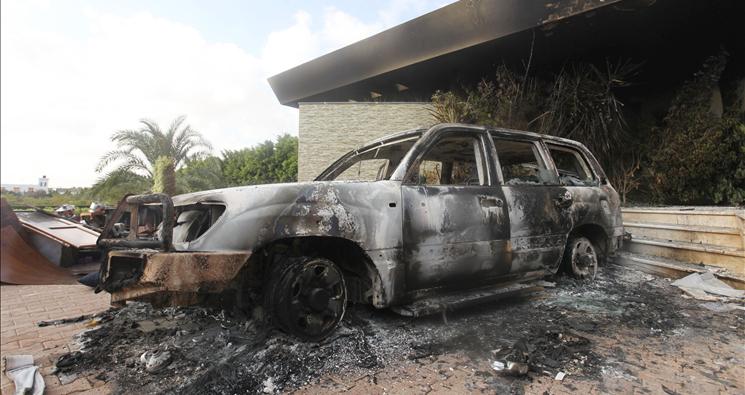Benghazi: Don’t Fall for the Misdirection
For the Washington Post, David Ignatius has obtained a CIA timeline of the September 11 attack. He begins:
A detailed CIA timeline of the assault on U.S. facilities in Benghazi paints an anguishing picture of embattled Americans waiting for Libyan security forces who didn’t come and courageous CIA officers who died on a rooftop without the heavy weapons they needed, trying to protect their colleagues below.
It’s a story of individual bravery, but also of a CIA misjudgment in relying on Libyan militias and a newly formed Libyan intelligence organization to keep Americans safe in Benghazi.
That much we already knew. The courage of the few defenders has been well documented (and can’t be praised enough). Equally well documented is the abysmal decision-making that left them out-gunned, out-manned, and vulnerable in the midst of a veritable hornet’s nest of terrorism. But then Ignatius says this:
While there were multiple errors that led to the final tragedy, there’s no evidence that the White House or CIA leadership deliberately delayed or impeded rescue efforts.
Yet the timeline he then reports is wholly irrelevant to deciding that crucial question. In that timeline, we learn that a band of six men raced to rescue Ambassador Stevens, our Libyan militia “allies” (with isolated exceptions) not only were ineffective, they apparently denied the six-man team the use of their .50 caliber machine guns, and a Predator drone did arrive but was unarmed. Unable to find the ambassador, the team retreated to the security “annex” where they are attacked for more than an hour. Four hours later, the attack is renewed, and while the mortars aren’t “painted” with lasers, some of the attackers are — as “warnings not to fire.” Three mortar shells then hit the roof, killing Glen Doherty and Tyrone Woods.
What is missing from this account? Any details at all about the military or White House’s situational awareness and decision-making. As I detailed on Monday, the White House and Department of Defense no doubt already have a timeline that includes the following information: (a) when the military learned of the attack; (b) the military’s state of situational awareness hour-by-hour; (c) whether it received any requests for help; (d) what assets — if any — were available to render aid in time; (e) what recommendations were made; (f) whether any definitive orders were given; and (g) who gave them.
More than six hours passed between the arrival of the Predator drone overhead and the final, deadly attack on the annex. That is more than enough time to make a decision and bring military assets into the fight. Why were they not deployed? The Daily Beast says that the State Department “never requested military backup,” but that hardly answers the question. That’s typically the responsibility of the ambassador, who was at that very moment cut off, alone, and dying. Interestingly, in that same report the Daily Beast wasn’t able to confirm or deny whether CIA officers made requests for air support.
The bottom line is that the president of the United States has the inherent authority to order immediate military assistance, regardless of whether a request comes from the State Department, CIA officials on the ground, or — in the confusion of battle — from no one at all. Why did you fail to give that order, Mr. President? And if you did, why was it not carried out?
The CIA timeline confirms only what we already knew: A small band of courageous Americans fought a desperate battle with insufficient resources and no effective help from the most powerful military in the world. In other words, we left men behind.
